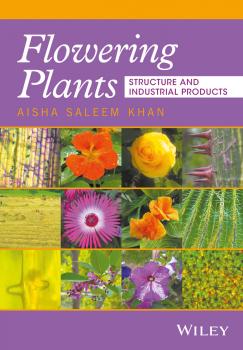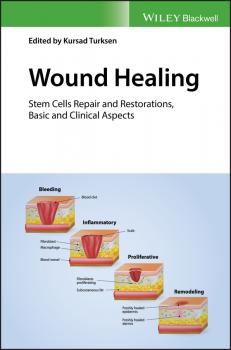Прочая образовательная литература
Различные книги в жанре Прочая образовательная литератураOrganic Redox Systems. Synthesis, Properties, and Applications
Providing a thorough overview of leading research from internationally-recognized contributing authors, this book describes methods for the preparation and application of redox systems for organic electronic materials like transistors, photovoltaics, and batteries. • Covers bond formation and cleavage, supramolecular systems, molecular design, and synthesis and properties • Addresses preparative methods, unique structural features, physical properties, and material applications of redox active p-conjugated systems • Offers a useful guide for both academic and industrial chemists involved with organic electronic materials • Focuses on the transition-metal-free redox systems composed of organic and organo main group compounds
Work-Life Advantage. Sustaining Regional Learning and Innovation
Work-Life Advantage analyses how employer-provision of ‘family-friendly’ working arrangements – designed to help workers better reconcile work, home and family – can also enhance firms’ capacities for learning and innovation, in pursuit of long-term competitive advantage and socially inclusive growth. Brings together major debates in labour geography, feminist geography, and regional learning in novel ways, through a focus on the shifting boundaries between work, home, and family Addresses a major gap in the scholarly research surrounding the narrow ‘business case’ for work-life balance by developing a more socially progressive, workerist ‘dual agenda’ Challenges and disrupts masculinist assumptions of the “ideal worker” and the associated labour market marginalization of workers with significant home and family commitments Based on 10 years of research with over 300 IT workers and 150 IT firms in the UK and Ireland, with important insights for professional workers and knowledge-intensive companies around the world
Enzyme. Struktur, Kinetik und Anwendungen
Hans Bisswanger prasentiert eine zugangliche Einfuhrung in ein Gebiet, das zu den traditionellen Angstfachern der Studenten der Naturwissenschaften gehort. Kein anderes Buch bietet eine leichter verstandliche Einfuhrung in die Enzymkinetik und die verschiedenen Enzymfamilien.
Flowering Plants. Structure and Industrial Products
Angiosperms, or flowering plants, are one of the most diverse plant groups on the planet, and they offer tremendous resources for a broad range of industries. Flowering Plants examines the anatomy and morphology of angiosperms with a focus on relating their metabolic activities to products for the pharmaceutical, food, cosmetic, and textile industries. This up-to-date reference provides a thorough understanding of plant structure and chemical and molecular processes found in angiosperms. It covers many important topics on applied botany, and therefore, can also be used as a textbook for students of related fields. It details the latest research in the field, along with areas in need of further study, for students, researchers, and professionals working in industry. The book takes advantage of technological innovations to showcase a range of advanced techniques for studying plant structure and metabolites, such as cryo-electron microscopy, ultramicroscopy, x-ray crystallography, spectroscopy, and chromatography. Filled with helpful illustrations, diagrams, and flowcharts to aid comprehension, Flowering Plants offers readers the morphological, anatomic, and molecular knowledge about angiosperms they need for a range of industrial applications.
Wound Healing. Stem Cells Repair and Restorations, Basic and Clinical Aspects
A comprehensive resource on the recent developments of stem cell use in wound healing With contributions from experts in the field, Wound Healing offers a thorough review of the most recent findings on the use of stem cells to heal wounds. This important resource covers both the basic and translational aspects of the field. The contributors reveal the great progress that has been made in recent years and explore a wide range of topics from an overview of the stem cell process in wound repair to inflammation and cancer. They offer a better understanding of the identities of skin stem cells as well as the signals that govern their behavior that contributes to the development of improved therapies for scarring and poorly healing wounds. Comprehensive in scope, this authoritative resource covers a wealth of topics such as: an overview of stem cell regeneration and repair, wound healing and cutaneous wound healing, the role of bone marrow derived stems cells, inflammation in wound repair, role and function of inflammation in wound repair, and much more. This vital resource: Provides a comprehensive overview of stem cell use in wound healing, including both the basic and translational aspects of the field Covers recent developments and emerging subtopics within the field Offers an invaluable resource to clinical and basic researchers who are interested in wound healing, stem cells, and regenerative medicine Contains contributions from leading experts in the field of wound healing and care Wound Healing offers clinical researchers and academics a much-needed resource written by noted experts in the field that explores the role of stem cells in the repair and restoration of healing wounds.
Chemometrics. Statistics and Computer Application in Analytical Chemistry
The third edition of this long-selling introductory textbook and ready reference covers all pertinent topics, from basic statistics via modeling and databases right up to the latest regulatory issues. The experienced and internationally recognized author, Matthias Otto, introduces the statistical-mathematical evaluation of chemical measurements, especially analytical ones, going on to provide a modern approach to signal processing, designing and optimizing experiments, pattern recognition and classification, as well as modeling simple and nonlinear relationships. Analytical databases are equally covered as are applications of multiway analysis, artificial intelligence, fuzzy theory, neural networks, and genetic algorithms. The new edition has 10% new content to cover such recent developments as orthogonal signal correction and new data exchange formats, tree based classification and regression, independent component analysis, ensemble methods and neuro-fuzzy systems. It still retains, however, the proven features from previous editions: worked examples, questions and problems, additional information and brief explanations in the margin.
Der HPLC-Experte II. So nutze ich meine HPLC / UHPLC optimal!
Erstmalig in einem Buch liegt die moderne HPLC/UHPLC-Anlage im Fokus. In kompakter Form wird gezeigt, wie die verschiedenen Geräte für eine maximale Auflösung optimal genutzt werden können. Aber auch wie vorzugehen ist, wenn eher die Robustheit im Vordergrund steht. Praxisnah erfährt der erfahrene Leser welche Möglichkeiten ihm heute zur Verfügung stehen aber auch wo die Grenzen einer modernen HPLC/UHPLC-Anlage liegen. Ein Handbuch von Praktikern für Praktiker. Teil 1 • Wann sollte ich meine UHPLC als UHPLC betreiben? • Die moderne HPLC/UHPLC-Anlage • Die Anforderungen heute an die einzelne Module • Der Säulenthermostat – eine einfache Angelegenheit? • Das Problem der Bandenverbreiterung in einer HPLC/UHPLC-Anlage • Der Gradient; Anforderungen, optimaler Einsatz, Tricks und Fallstricke • Anforderungen an LC-Hardware bei der Kopplung mit unterschiedlichen Massenspektrometern • 2D-Chromatographie – Möglichkeiten und Grenzen • Materialien in HPLC/UHPLC – was, für welchen Zweck? Teil 2 • Was muss die Software können, damit die Hardware optimal genutzt werden kann? • Aspekte der modernen HPLC – Erfahrungsbericht eines Anwenders • Erfahrungsbericht eines unabhängiges Serviceingenieurs – Tipps und • Empfehlungen für einen optimalen Betrieb von Agilent- und Waters-Anlagen Der Analyt, die • Fragenstellung und die UHPLC – der Einsatz von UHPLC in der Praxis • Geräte-Hersteller berichten – Beiträge von Agilent, Shimadzu und Thermo Scientific
Thermal Ionization Mass Spectrometry (TIMS). Silicate Digestion, Separation, Measurement
This first book to discuss both separation chemistry and mass spectrometry for mineral and rock analysis compares the two frequently used techniques, analyzing both their scope and limitations by way of numerous practical examples. The excellent and highly experienced author adopts a comprehensive and systematic approach, reviewing all the steps involved in an analytical workflow. In addition to thermal ionization mass spectrometry (TIMS), he also discusses applications of ICP-MS. Furthermore, alongside detailed protocols on sample preparation and mass spectrometric measurements, numerous practical hints are given. A must-have handy guide for all isotope geochemists and anyone involved in isotope analysis.
Dynamische Chemie. Schnelle Analysen mit Teststäbchen
Was passiert beim Erhitzen eines kohlensäurehaltigen Mineralwassers? Wie viel Ascorbinsäure (= Vitamin C) ist im Apfel? Wie verändert sich der pH-Wert beim Lösen von Brausetabletten? Was passiert während der Gärung? Stets spielen chemische Gleichgewichte (und deren Verschiebungen, u.a. durch pH-Änderungen), Oxidationen und Reduktionen eine Rolle. Als wichtiges Hilfsmittel für die insgesamt 131 Experimente werden Teststäbchen verwendet, die in kürzester Zeit halb-quantitative Analysen ermöglichen. Auf diese Weise lassen sich auch Reaktionsverläufe erfassen – ebenso wie Lösungs- und Fällungsreaktionen. Das Verstehen-Lernen chemischer Reaktionen steht im Vordergrund aller Experimente. Dem Kapitel Gleichgewichtsreaktionen folgen Redox-Reaktionen am Beispiel von Kupfer, Eisen, Ascorbinsäure, Sulfit/Sulfat und Nitrit/Nitrat. Den chemischen und enzymatischen Reaktionen von Glucose ist ein weiteres Kapitel gewidmet. Gleichzeitig wird die chemische Fachsprache erläutert und geübt. Ein Muss für jedes Schülerlabor, engagierte Lehrer und jeden an Chemie Interessierten: das Buch hilft beim Erlernen und der Verinnerlichung der chemischen Denkweise.
Downstream Industrial Biotechnology. Recovery and Purification
An affordable, easily accessible desk reference on biomanufacturing, focused on downstream recovery and purification Advances in the fundamental knowledge surrounding biotechnology, novel materials, and advanced engineering approaches continue to be translated into bioprocesses that bring new products to market at a significantly faster pace than most other industries. Industrial scale biotechnology and new manufacturing methods are revolutionizing medicine, environmental monitoring and remediation, consumer products, food production, agriculture, and forestry, and continue to be a major area of research. The downstream stage in industrial biotechnology refers to recovery, isolation, and purification of the microbial products from cell debris, processing medium and contaminating biomolecules from the upstream process into a finished product such as biopharmaceuticals and vaccines. Downstream process design has the greatest impact on overall biomanufacturing cost because not only does the biochemistry of different products ( e.g., peptides, proteins, hormones, antibiotics, and complex antigens) dictate different methods for the isolation and purification of these products, but contaminating byproducts can also reduce overall process yield, and may have serious consequences on clinical safety and efficacy. Therefore downstream separation scientists and engineers are continually seeking to eliminate, or combine, unit operations to minimize the number of process steps in order to maximize product recovery at a specified concentration and purity. Based on Wiley's Encyclopedia of Industrial Biotechnology: Bioprocess, Bioseparation, and Cell Technology, this volume features fifty articles that provide information on down- stream recovery of cells and protein capture; process development and facility design; equipment; PAT in downstream processes; downstream cGMP operations; and regulatory compliance. It covers: Cell wall disruption and lysis Cell recovery by centrifugation and filtration Large-scale protein chromatography Scale down of biopharmaceutical purification operations Lipopolysaccharide removal Porous media in biotechnology Equipment used in industrial protein purification Affinity chromatography Antibody purification, monoclonal and polyclonal Protein aggregation, precipitation and crystallization Freeze-drying of biopharmaceuticals Biopharmaceutical facility design and validation Pharmaceutical bioburden testing Regulatory requirements Ideal for graduate and advanced undergraduate courses on biomanufacturing, biochemical engineering, biophar- maceutical facility design, biochemistry, industrial microbiology, gene expression technology, and cell culture technology, Downstream Industrial Biotechnology is also a highly recommended resource for industry professionals and libraries.









